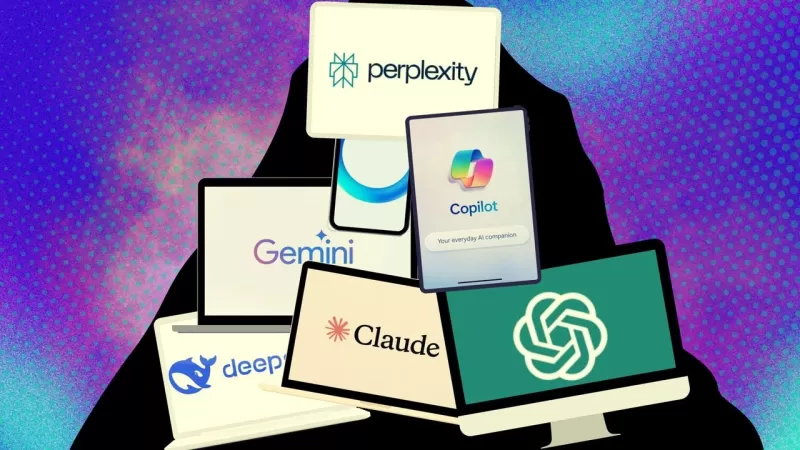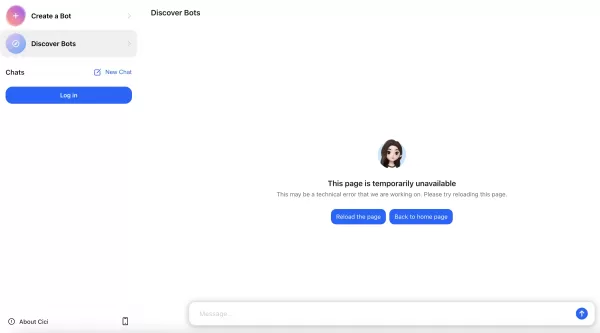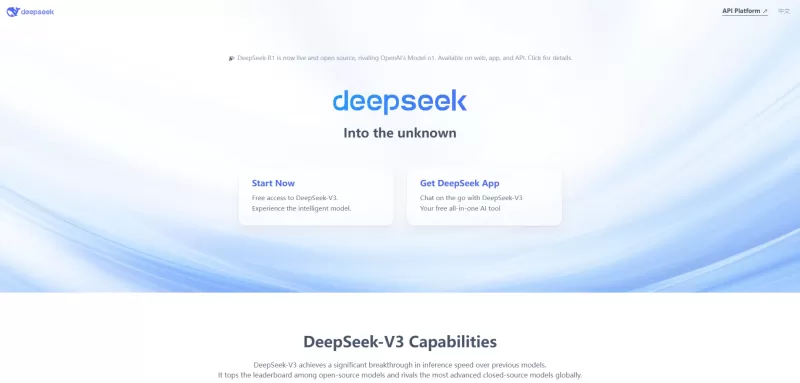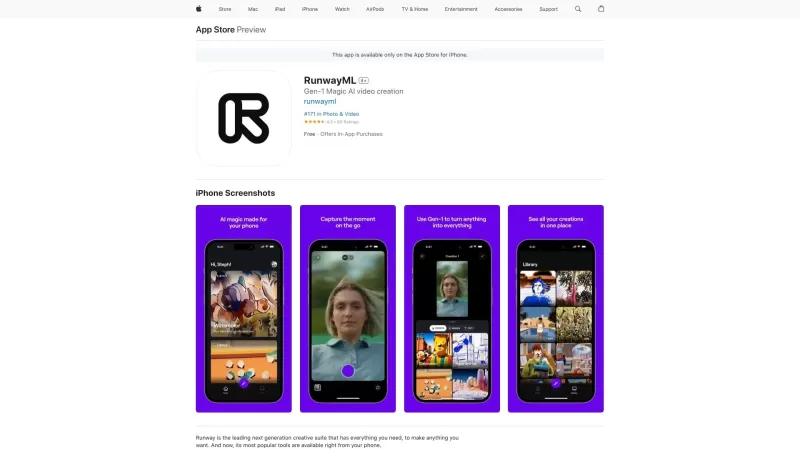Top 10 Reasons AI Became Mainstream Overnight - Future Implications Explored

The Rapid Rise of Generative AI: A Game-Changer in Technology
It's been a whirlwind, hasn't it? Generative AI, with tools like ChatGPT, burst onto the scene in early 2023, transforming the tech landscape almost overnight. It's like we've stumbled upon some alien tech from a Stargate episode—except it's real, and it's changing everything. From vendors rushing to add AI features to our daily workflows shifting, the impact is undeniable.
But how did this happen so fast? In this article, I'll dive into the ten key factors that have propelled generative AI's swift advancement and integration into our tech stacks and workday routines.
Phase I: Fundamental Innovations
I've been working with AI since my thesis days over 20 years ago, and even launched AI products back in the 90s. But nothing prepared me for the leap forward that ChatGPT represents. Let's break down the three key factors that sparked this revolution.
1. Advancements in Transformer Models
AI used to be incredibly narrow, trained on specific datasets for limited tasks. I remember shipping a product called House Plant Clinic in the early 90s, trained only on house plant issues. It was great for its purpose but clueless outside its training data.
Then, in 2017, Google's "Attention Is All You Need" paper introduced the self-attention model, allowing AIs to process entire sentences at once. This breakthrough enabled AIs to grasp context, distinguishing between "a bank of the river" and "a bank in the center of town."
2. Widely-Trained Foundation Models
With the transformer model, AIs could be trained on vast, diverse datasets, understanding context from the data itself. This led to models like OpenAI's GPT-3.5 and GPT-4, trained on nearly the entire internet and countless books.
These models became versatile, capable of handling any application without specialized training. While we spent months training House Plant Clinic, today's AIs like ChatGPT or Google Gemini can diagnose plant issues and much more out of the box.
However, there's a catch: who owns this training data? Lawsuits over copyrighted materials could limit future data availability, impacting these models' effectiveness. Also, not all internet data is accurate or appropriate, which poses challenges as vendors work to establish guardrails.
3. Breakthroughs in Hardware (GPUs and TPUs)
The transformer models' complex calculations demanded significant computing power. Initially, NVIDIA's gaming GPUs handled the matrix operations needed for AI, but their Ampere and Hopper series chips boosted performance and efficiency.
Google's TPUs, designed specifically for AI, along with custom chips from Microsoft and Amazon, made world-scale AI training affordable for major players. This allowed AI capabilities to be offered as a service, accessible to businesses of all sizes, and enabled real-time AI analysis crucial for applications like self-driving cars.
Phase II: Market Forces Drive Adoption
With the tech in place, market dynamics took over, pushing AI into the mainstream. Here are seven key factors driving this adoption.
4. ChatGPT for Everyone, and API Access
When ChatGPT launched in early 2023, it quickly became the fastest-growing app ever. It was free to use, easy as a Google search, and delivered stunningly accurate responses. Everyone who tried it felt like they were touching the future.
OpenAI then opened ChatGPT's models via an API, allowing developers to integrate world-class AI into their applications over a weekend. The low cost per API call made it an attractive addition, expanding product lines and boosting revenue.
5. Open Source Acceleration
To avoid vendor lock-in, the open-source community embraced AI, offering models like LLaMa and Stable Diffusion. Platforms like Hugging Face made AI integration easy for developers of all skill levels.
Open source fosters collaboration, continuous improvement, and introduces niche features that big vendors might not prioritize. This democratizes AI, accelerating its adoption across diverse applications.
6. Consumer and Enterprise Demand
Generative AI isn't just hype; it delivers real value. I've documented 15 ways AI has helped me in 2024 alone, from programming to photo editing and sentiment analysis. Businesses, students, and individuals alike have recognized AI's potential, driving demand and boosting the valuations of AI companies.
7. Virality and Network Effects
For years, AI was niche, but suddenly, it was mainstream. Aunt Marge was discussing ChatGPT at family gatherings, and it became the fastest-growing app, reaching 100 million active users within months and doubling that a year later.
Its ability to generate pirate talk, write Star Trek stories, or analyze business data in minutes captured the public's imagination and fueled its rapid spread.
8. Competitive Market Pressure
With OpenAI's success, other tech giants like Google, Microsoft, Meta, Amazon, and Apple couldn't afford to be left behind. AI became a headline feature, either as a bonus or a lucrative upsell. Microsoft's Copilot, Google's Gemini, and others quickly followed, intensifying competition and innovation.
9. Legislative and Regulatory Lag
The AI boom has been like the Wild West, with governments struggling to keep up. The US set up some oversight plans, but they were lukewarm. AI companies warned of potential catastrophes without regulation, and copyright lawsuits added complexity. A new administration's focus on reduced regulation further fueled rapid growth and innovation, but also raised concerns about unchecked development.
10. Continuous Innovation and Investment
AI isn't a passing fad. Major companies continue to invest billions, offering valuable products and services. We're seeing breakthroughs in multimodal AI, autonomous agents, and AI coding AI. It's reminiscent of the app economy's virtuous cycle in the mid-2000s, where investment and innovation fed each other, pushing AI into the mainstream for good.
Phase III: The Future
Back in the 80s, my mom dreamed of a computer that could vacuum her floors. Now, we have robots like Wally the Narwal doing just that. My dream? An AI that can bring me coffee while I write. With work on humanoid robots by Tesla, Apple, and Meta, it might not be far off.
Given AI's current quirks, like Alexa's occasional mishaps or ChatGPT's occasional fabrications, I'm not sure I want a robot roaming my living room just yet. But hey, a guy can dream about coffee.
The past two years have been a wild ride, and we're likely just at the beginning. What do you think has been the most significant factor in AI's rapid adoption? Have you integrated AI tools like ChatGPT into your daily workflow? How have they changed your work or creativity? Do you see AI as a long-term game-changer, or are we in a hype cycle that will eventually stabilize? And what about the ethical and regulatory concerns—do you think AI development is moving too fast for proper oversight?
Let us know your thoughts in the comments below.
You can follow my day-to-day project updates on social media. Be sure to subscribe to my weekly update newsletter, and follow me on Twitter/X at @DavidGewirtz, on Facebook at Facebook.com/DavidGewirtz, on Instagram at Instagram.com/DavidGewirtz, on Bluesky at @DavidGewirtz.com, and on YouTube at YouTube.com/DavidGewirtzTV.
Related article
 Google's Gemini app adds real-time AI video, Deep Research, and new features (120 chars)
Google unveiled significant Gemini AI enhancements during its I/O 2025 developer conference, expanding multimodal capabilities, introducing next-generation AI models, and strengthening ecosystem integrations across its product portfolio.Key Gemini Li
Google's Gemini app adds real-time AI video, Deep Research, and new features (120 chars)
Google unveiled significant Gemini AI enhancements during its I/O 2025 developer conference, expanding multimodal capabilities, introducing next-generation AI models, and strengthening ecosystem integrations across its product portfolio.Key Gemini Li
 Assort Health Secures $50M Funding to Automate Patient Communication
Assort Health, an emerging AI healthcare startup specializing in automated patient communications for specialty practices, has secured approximately $50 million in Series B funding at a $750 million valuation, according to sources familiar with the t
Assort Health Secures $50M Funding to Automate Patient Communication
Assort Health, an emerging AI healthcare startup specializing in automated patient communications for specialty practices, has secured approximately $50 million in Series B funding at a $750 million valuation, according to sources familiar with the t
 Generate Excel Formulas Instantly with AI-Powered Excel Tool
Transform your spreadsheet workflow with GPTExcel - the AI-powered solution that converts natural language descriptions into precise Excel and Google Sheets formulas. This powerful tool eliminates the frustration of manual formula creation, making co
Comments (1)
0/200
Generate Excel Formulas Instantly with AI-Powered Excel Tool
Transform your spreadsheet workflow with GPTExcel - the AI-powered solution that converts natural language descriptions into precise Excel and Google Sheets formulas. This powerful tool eliminates the frustration of manual formula creation, making co
Comments (1)
0/200
![FredWhite]() FredWhite
FredWhite
 August 20, 2025 at 5:01:22 PM EDT
August 20, 2025 at 5:01:22 PM EDT
Whoa, generative AI hitting mainstream feels like sci-fi turned real! ChatGPT and its buddies are shaking things up—kinda makes me wonder if my job’s next on the AI chopping block. 😅 Any bets on what’s coming in 2026?


 0
0

The Rapid Rise of Generative AI: A Game-Changer in Technology
It's been a whirlwind, hasn't it? Generative AI, with tools like ChatGPT, burst onto the scene in early 2023, transforming the tech landscape almost overnight. It's like we've stumbled upon some alien tech from a Stargate episode—except it's real, and it's changing everything. From vendors rushing to add AI features to our daily workflows shifting, the impact is undeniable.
But how did this happen so fast? In this article, I'll dive into the ten key factors that have propelled generative AI's swift advancement and integration into our tech stacks and workday routines.
Phase I: Fundamental Innovations
I've been working with AI since my thesis days over 20 years ago, and even launched AI products back in the 90s. But nothing prepared me for the leap forward that ChatGPT represents. Let's break down the three key factors that sparked this revolution.
1. Advancements in Transformer Models
AI used to be incredibly narrow, trained on specific datasets for limited tasks. I remember shipping a product called House Plant Clinic in the early 90s, trained only on house plant issues. It was great for its purpose but clueless outside its training data.
Then, in 2017, Google's "Attention Is All You Need" paper introduced the self-attention model, allowing AIs to process entire sentences at once. This breakthrough enabled AIs to grasp context, distinguishing between "a bank of the river" and "a bank in the center of town."
2. Widely-Trained Foundation Models
With the transformer model, AIs could be trained on vast, diverse datasets, understanding context from the data itself. This led to models like OpenAI's GPT-3.5 and GPT-4, trained on nearly the entire internet and countless books.
These models became versatile, capable of handling any application without specialized training. While we spent months training House Plant Clinic, today's AIs like ChatGPT or Google Gemini can diagnose plant issues and much more out of the box.
However, there's a catch: who owns this training data? Lawsuits over copyrighted materials could limit future data availability, impacting these models' effectiveness. Also, not all internet data is accurate or appropriate, which poses challenges as vendors work to establish guardrails.
3. Breakthroughs in Hardware (GPUs and TPUs)
The transformer models' complex calculations demanded significant computing power. Initially, NVIDIA's gaming GPUs handled the matrix operations needed for AI, but their Ampere and Hopper series chips boosted performance and efficiency.
Google's TPUs, designed specifically for AI, along with custom chips from Microsoft and Amazon, made world-scale AI training affordable for major players. This allowed AI capabilities to be offered as a service, accessible to businesses of all sizes, and enabled real-time AI analysis crucial for applications like self-driving cars.
Phase II: Market Forces Drive Adoption
With the tech in place, market dynamics took over, pushing AI into the mainstream. Here are seven key factors driving this adoption.
4. ChatGPT for Everyone, and API Access
When ChatGPT launched in early 2023, it quickly became the fastest-growing app ever. It was free to use, easy as a Google search, and delivered stunningly accurate responses. Everyone who tried it felt like they were touching the future.
OpenAI then opened ChatGPT's models via an API, allowing developers to integrate world-class AI into their applications over a weekend. The low cost per API call made it an attractive addition, expanding product lines and boosting revenue.
5. Open Source Acceleration
To avoid vendor lock-in, the open-source community embraced AI, offering models like LLaMa and Stable Diffusion. Platforms like Hugging Face made AI integration easy for developers of all skill levels.
Open source fosters collaboration, continuous improvement, and introduces niche features that big vendors might not prioritize. This democratizes AI, accelerating its adoption across diverse applications.
6. Consumer and Enterprise Demand
Generative AI isn't just hype; it delivers real value. I've documented 15 ways AI has helped me in 2024 alone, from programming to photo editing and sentiment analysis. Businesses, students, and individuals alike have recognized AI's potential, driving demand and boosting the valuations of AI companies.
7. Virality and Network Effects
For years, AI was niche, but suddenly, it was mainstream. Aunt Marge was discussing ChatGPT at family gatherings, and it became the fastest-growing app, reaching 100 million active users within months and doubling that a year later.
Its ability to generate pirate talk, write Star Trek stories, or analyze business data in minutes captured the public's imagination and fueled its rapid spread.
8. Competitive Market Pressure
With OpenAI's success, other tech giants like Google, Microsoft, Meta, Amazon, and Apple couldn't afford to be left behind. AI became a headline feature, either as a bonus or a lucrative upsell. Microsoft's Copilot, Google's Gemini, and others quickly followed, intensifying competition and innovation.
9. Legislative and Regulatory Lag
The AI boom has been like the Wild West, with governments struggling to keep up. The US set up some oversight plans, but they were lukewarm. AI companies warned of potential catastrophes without regulation, and copyright lawsuits added complexity. A new administration's focus on reduced regulation further fueled rapid growth and innovation, but also raised concerns about unchecked development.
10. Continuous Innovation and Investment
AI isn't a passing fad. Major companies continue to invest billions, offering valuable products and services. We're seeing breakthroughs in multimodal AI, autonomous agents, and AI coding AI. It's reminiscent of the app economy's virtuous cycle in the mid-2000s, where investment and innovation fed each other, pushing AI into the mainstream for good.
Phase III: The Future
Back in the 80s, my mom dreamed of a computer that could vacuum her floors. Now, we have robots like Wally the Narwal doing just that. My dream? An AI that can bring me coffee while I write. With work on humanoid robots by Tesla, Apple, and Meta, it might not be far off.
Given AI's current quirks, like Alexa's occasional mishaps or ChatGPT's occasional fabrications, I'm not sure I want a robot roaming my living room just yet. But hey, a guy can dream about coffee.
The past two years have been a wild ride, and we're likely just at the beginning. What do you think has been the most significant factor in AI's rapid adoption? Have you integrated AI tools like ChatGPT into your daily workflow? How have they changed your work or creativity? Do you see AI as a long-term game-changer, or are we in a hype cycle that will eventually stabilize? And what about the ethical and regulatory concerns—do you think AI development is moving too fast for proper oversight?
Let us know your thoughts in the comments below.
You can follow my day-to-day project updates on social media. Be sure to subscribe to my weekly update newsletter, and follow me on Twitter/X at @DavidGewirtz, on Facebook at Facebook.com/DavidGewirtz, on Instagram at Instagram.com/DavidGewirtz, on Bluesky at @DavidGewirtz.com, and on YouTube at YouTube.com/DavidGewirtzTV.
 Assort Health Secures $50M Funding to Automate Patient Communication
Assort Health, an emerging AI healthcare startup specializing in automated patient communications for specialty practices, has secured approximately $50 million in Series B funding at a $750 million valuation, according to sources familiar with the t
Assort Health Secures $50M Funding to Automate Patient Communication
Assort Health, an emerging AI healthcare startup specializing in automated patient communications for specialty practices, has secured approximately $50 million in Series B funding at a $750 million valuation, according to sources familiar with the t
 Generate Excel Formulas Instantly with AI-Powered Excel Tool
Transform your spreadsheet workflow with GPTExcel - the AI-powered solution that converts natural language descriptions into precise Excel and Google Sheets formulas. This powerful tool eliminates the frustration of manual formula creation, making co
Generate Excel Formulas Instantly with AI-Powered Excel Tool
Transform your spreadsheet workflow with GPTExcel - the AI-powered solution that converts natural language descriptions into precise Excel and Google Sheets formulas. This powerful tool eliminates the frustration of manual formula creation, making co
 August 20, 2025 at 5:01:22 PM EDT
August 20, 2025 at 5:01:22 PM EDT
Whoa, generative AI hitting mainstream feels like sci-fi turned real! ChatGPT and its buddies are shaking things up—kinda makes me wonder if my job’s next on the AI chopping block. 😅 Any bets on what’s coming in 2026?


 0
0





























